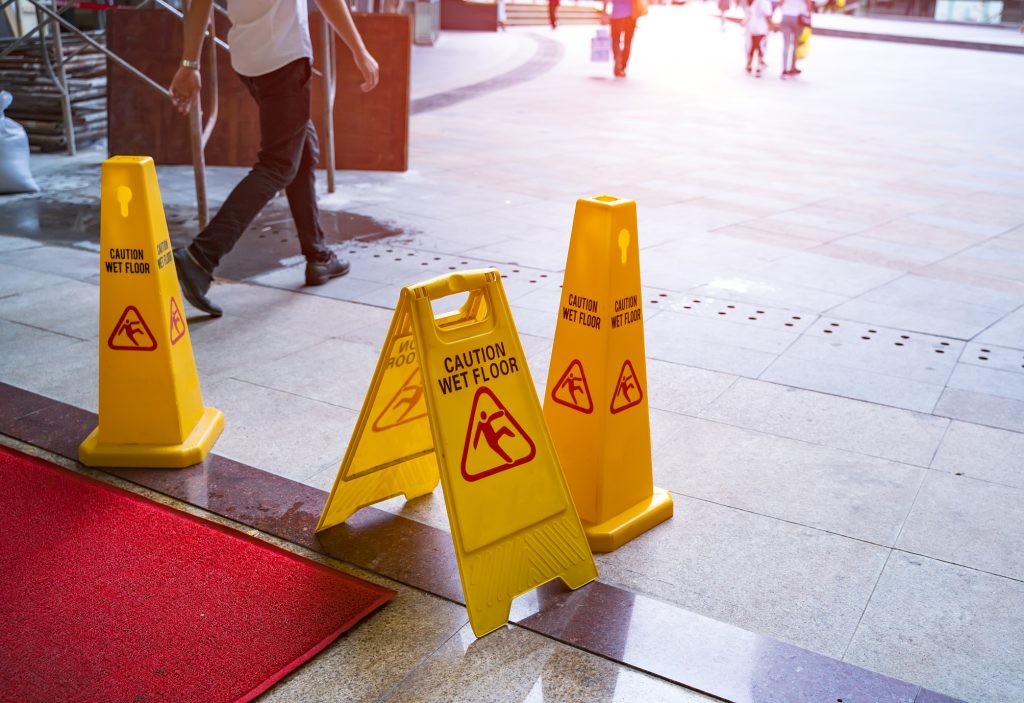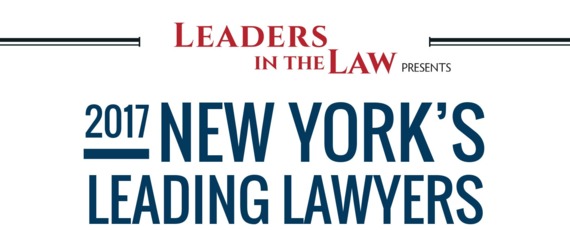
The presence of a “wet floor” sign near the scene of a slip and fall hazard does not automatically eliminate the property owner’s liability should an accident happen. Depending on the circumstances, a person that suffers an injury in a fall could be entitled to monetary compensation—even if the property owner put up warning signs around the hazard.
A wet floor sign could be the basis of the at-fault party’s defense, however. They are likely to claim that they made every effort to warn the public of the hazard while cleaning it up as fast as possible.
Never assume you do not have the right to seek compensation after a slip and fall accident. Even if a wet floor sign was present, let a skilled legal professional advise you if the property owner or occupier met their duty of care. A New York City slip and fall lawyer can review your claim and advise you on your right to recovery.
Negligence in a slip and fall case
Like with any injury case, you must establish that the person or entity responsible for your fall was negligent. In these cases, this could boil down to the negligence of either the property owner or occupier if they are not the same party.
The most common example includes a dangerous slip and fall hazard that a property owner failed to address.
These hazards can include:
- Wet floors
- Spilled food
- Loose extension cords
- Poor lighting
If the property owner knew of the hazard and failed to address it in a reasonable way, they could be on the hook for your damages.
In fact, the property owner could face liability even if they were not actually aware of the hazard. If the property owner should have known about the hazard because of how long it was there, or knew of the situation that caused the hazard like a leaking pipe, they could be responsible even if they did not have actual notice of the danger.
The amount of time a hazard is present plays an important role in determining negligence. For example, a hazard that only exists for a matter of seconds before an accident might not result in a viable injury claim. If that hazard is present for days, your New York City personal injury lawyers could make the case that the property owner was negligent.
When is a Property Owner Still Liable if a Wet Floor Sign Was Posted?
Under New York law, a property owner has a duty to warn guests and other persons authorized to be at a property about known hazards and dangerous conditions. Posting a “Wet Floor” sign or roping off a wet area may reduce a property owner’s liability for injuries incurred in slip and fall accidents but may not preclude that liability.
In addition, there are several situations when a property owner will still be liable even after posting that sign, and they include:
- The owner posted the sign where it is difficult to see or where there is inadequate lighting. However, it is not enough for a property owner to put up a sign. People must be able to see the sign before they encounter a hazard.
- The “Wet Floor” sign was inadequate to warn about the extent of the hazard. For example, if water covers a large area, but a property owner only posts one sign which does not give adequate warning about the scope of the condition, they may be liable.
- Suppose a guest encountered and was injured by another dangerous condition (e.g. broken glass or debris) while taking a path around a wet floor. In that case, the owner will be responsible for damages.
- If the guest had no option but to proceed through standing water after seeing a “Wet Floor” sign, the owner may be liable for not providing a safe alternate pathway.
The facts and circumstances of each unique slip and fall case will determine whether a posted “Wet Floor” warning was sufficient to absolve a property owner from liability. A New York slip and fall accident attorney will analyze those facts and circumstances and advise you of your right and opportunity to sue the property owner for damages. The owner who posted the sign will probably claim that the victim was at least partially at fault for their injuries. However, an experienced lawyer will use all available evidence to assign as much liability to the property owner as possible.
The impact of wet floor signs on negligence claims
Business owners place wet floor signs around a hazard in an effort to warn patrons of a possible slip and fall hazard. They do not take these steps out of the goodness of their heart. Instead, business owners will claim that by putting a person on notice of the hazard, they absolve themselves of any injuries that occur.
The use of a wet floor sign combined with a reasonable effort to address the hazard could be enough to defeat a claim for compensation. However, simply placing a sign near a slip and fall hazard is likely not enough on its own to defeat an injury claim. Every business has a duty to protect their visitors from hazards, and failing to clean up a spill or other hazard in a timely manner is unreasonable—even if patrons are on notice of the hazard.
The sign itself could render it useless as a defense. Signs must be obvious to visitors to protect a property owner from liability. A sign that is too small or too far away from the hazard is not effective. The same is true if it is unclear what hazard the sign is referencing.
Inadequate signage is no different than lacking a wet floor sign entirely.
Discuss liability with a slip and fall attorney
Whether or not a property owner is liable for your injury is ultimately up to a jury. However, your attorney could evaluate your case and advise you on how strong your claim might be. With an aggressive approach to your case, your attorney could obtain a fair settlement and avoid the need for a trial. To learn more, contact Friedman, Levy, Goldfarb, Green & Bagley, P.C. right away for a free consultation.






